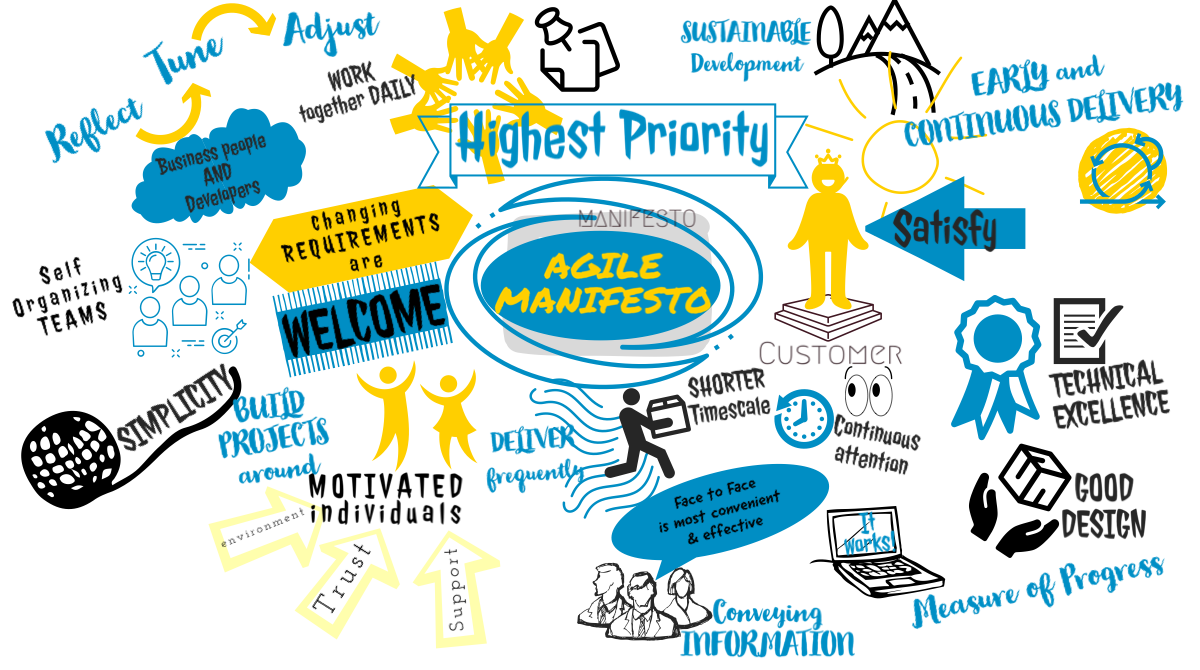Do you want to eliminate bureaucracy and favor productivity and creativity? Do you need to be dynamic and adaptive to stay competitive?
Let us tell you some tempting reasons why you should adopt an Agile mindset!

1. Deliver the right product
The Agile approach focuses on business value and on users. A close collaboration between the Business User / Customer and the developer(s), as well as prioritization of the product features happening through the customer, eases the road to achieve the desired product with the greatest business value.
2. Make stakeholders/customers happy & engaged
An Agile team works in the interest of the customers. Work occurs in time-boxed iterations, and the key stakeholders get continuously involved along the process. Always aware of the status of the current development, the stakeholders are given a demo of the new developed functionalities after each iteration. As counterparty they are asked to provide feedback. This process helps align the expectations, but also review the requirements for the next steps, while the transparency boosts trust and engagement. The effort and complexity estimates from the developer(s) for each new development item, combined with the fixed duration of the iteration and the known capacity of the team, provide reliable costs and delivery schedules. For these reasons the project can be better controlled and the risk of total failure is quasi non existent.
3. Have fun
Individuals are more valued than processes. The team is central and empowered to decide about their own work. Direct communication and close collaboration with the customers is crucial. Knowledge and information are shared. Failure becomes an opportunity to learn, and learning is motivating. Mistakes and issues are discussed within the team, while decisions for solutions and improvements are taken together. The team is self-managed and it receives support from the Agile advocate (coach or scrum master), who helps removing popping up impediments.
4. Increase productivity
The development team is self-organized. Developers know best how to do things and who should do what. The whole team is responsible for the quality of the delivery. Having this authority gives a sense of ownership and belonging, which makes the team take responsibility for the product and boosts its productivity.
5. Ensure higher quality
The development occurs incrementally allowing the team to focus on manageable bits. Agile principles discourage multi-tasking. The team members are often cross-functional but tackle one task at a time. The User Stories, which describe the features of the product, should contain the acceptance criteria to validate the implementation. The team is responsible for the testing at the technical level and the user/customer for the UAT (User acceptance Testing). Conducting this frequent review and testing helps to catch issues early and gives the chance to fix them at early stage.
6. Enable flexibility
In the Agile approach, being reactive to changes is more important than following the plan. Each iteration offers the opportunity to refine or to re-prioritize the requirements.
7. Profit from continuous delivery
The incremental delivery allows iterative improvements and adjustments. The “Product Owner” takes decisions continuously, which get validated continuously as well, reducing the risk to smaller bits. The delivery is predictable, due to time-box work management, expected at the end of the iteration, usually fixed to a 1 to 4 weeks cycle.
For a successful Agile transformation, do not forget that it’s more about a change of mindset than the implementation of a new working framework. The top management should be enthusiastic and supportive and at the same time, the team members should not be afraid not to identify to their old functions anymore.
Download infographic

